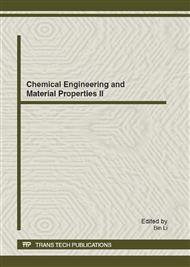p.770
p.774
p.780
p.785
p.790
p.795
p.803
p.807
p.812
Effects of Processing Parameters on Powder Utilization Ratio during Laser Metal Deposition Shaping
Abstract:
The Laser Metal Deposition Shaping (LMDS) process involves injecting metallic powder into a molten pool created by a high power industrial laser. As the laser traverses across the substrate in a layer-by-layer fashion, a fully dense metal is left in its path. A few processing parameters involved with the LMDS include the laser power, traverse speed, powder feeding rate, and gas flow rate, etc, which affect many factors of LMDS technology. Among them, the powder utilization ratio is an important one because it directly determines the build rate and build height per layer. Due to some objective reasons, the powder utilization ratio is far less than 100%. In order to ensure the stability of LMDS technology, it is necessary to investigate the match between powder utilization ratio and build rate and forming efficiency, and grasp the influence rules of processing parameters on powder utilization ratio. Accordingly, the related experiments were performed with the varied laser power, scanning speed and powder feeding rate. The results prove that the powder utilization ratio is a varied value, and affected by the processing parameters. Consequently, the relative ideal parameter match should be chosen in accordance with the specific circumstances during the LMDS technology, thus ensuring the better powder utilization ratio and promoting the forming efficiency and economic benefit.
Info:
Periodical:
Pages:
790-794
Citation:
Online since:
July 2012
Authors:
Price:
Сopyright:
© 2012 Trans Tech Publications Ltd. All Rights Reserved
Share:
Citation:


